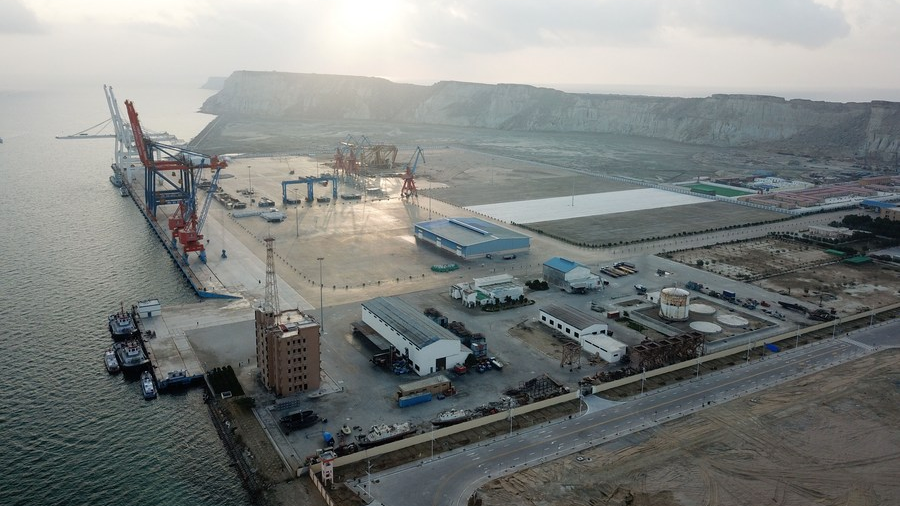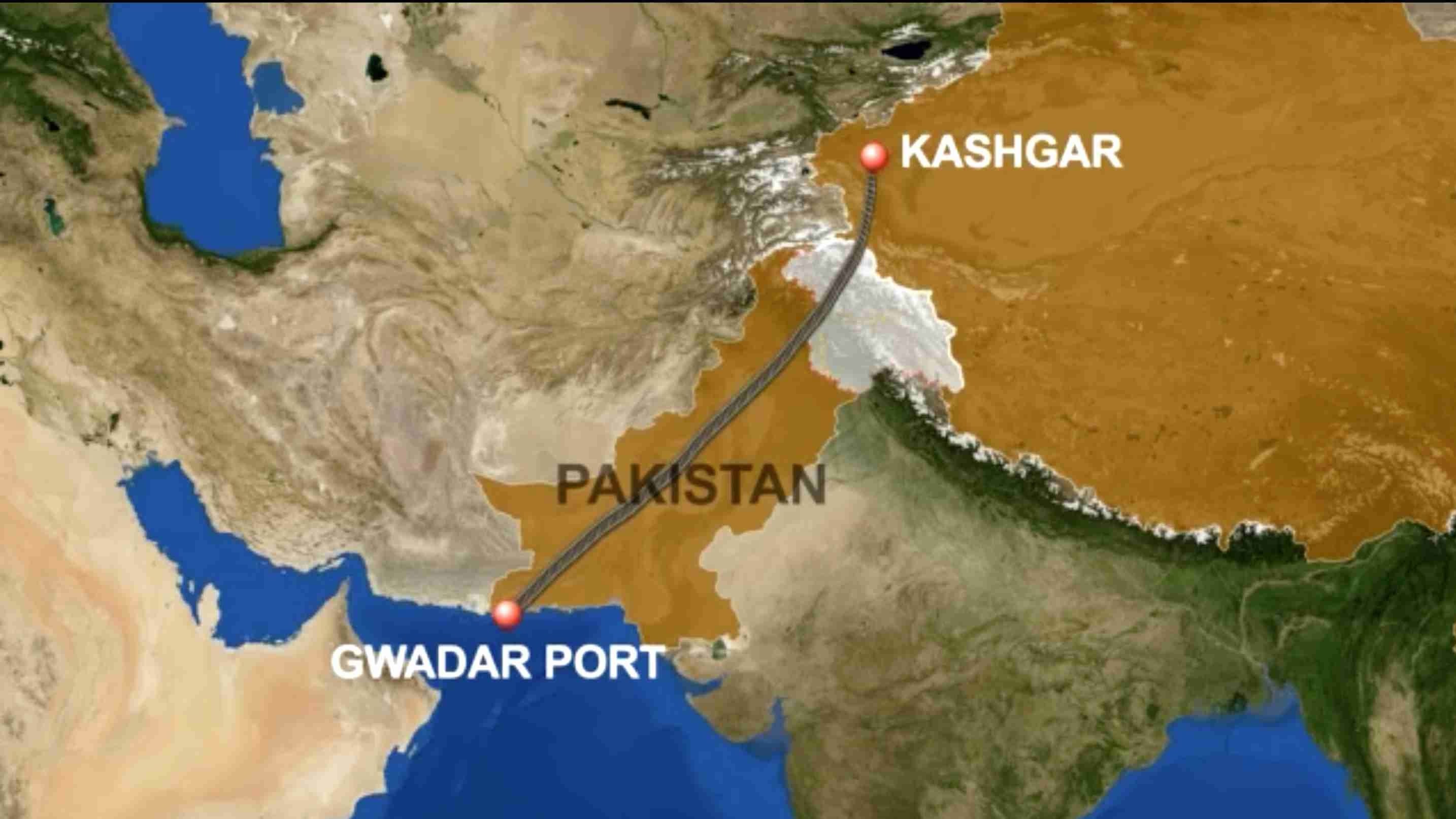
Gwadar Port in southwest Pakistan's Gwadar, January 29, 2018. /Xinhua
Gwadar Port in southwest Pakistan's Gwadar, January 29, 2018. /Xinhua
Editor's note: Djoomart Otorbaev is the former Prime Minister of the Kyrgyz Republic, a distinguished professor of the Belt and Road School of Beijing Normal University, and a member of Nizami Ganjavi International Center. The article reflects the author's views, and not necessarily those of CGTN.
In my previous article, I wrote that by building about 268 kilometers of new railways from China through Kyrgyzstan's territory to Uzbekistan, Chinese railways would gain access to the whole Central Asian railway infrastructure. In addition to significantly reducing the distance to European markets (up to 900 kilometers), this "southern" route will open new access through Central Asia to larger markets in South Asia. What does this mean?
The region's complex geography shows that the shortest route from Central Asia to the ports of the Indian Ocean must pass through the territory of Afghanistan. However, the political instability in Afghanistan has prevented such plans from being implemented. Judging by the latest events around the country, especially those related to the withdrawal of foreign troops from Afghanistan, there is now a good chance to restore peace. In my opinion, the situation in Afghanistan will change for the better if both internal and external trade develops actively and large infrastructure projects initiated by neighboring countries are implemented.
Such projects include constructing the Kabul corridor railway along the Termez (Uzbekistan) - Mazar-i-Sharif - Kabul - Peshawar (Pakistan) route, which has an annual transit potential of up to 20 million tons of cargo. The section Termez - Mazar-i-Sharif, built by Uzbekistan, is already operational. The further path to Peshawar, which is 573 kilometers long, will have to pass through the Hindu Kush mountains, where the heights passes exceed 3.5 thousand meters.
The Peshawar railway will connect arriving trains to Pakistan's transport system, thereby linking South Asia to Central Asia, Russia, and China and providing overland access to Pakistani ports of Gwadar, Karachi, or Qasim. The road will shorten Central Asia to Pakistan's transport times from 30 to 15 days and reduce transport costs by 30-35 percent. Experts say the port of Gwadar in Pakistan is the gateway to the shortest and most economical route from Central Asia to any sea. Compared to delivery from Central Asia to Iranian ports, the distance and transportation costs will be reduced by 50 percent and 30 percent, respectively.
It is worth emphasizing that soon the old city of Mazar-i-Sharif could become a transport hub for the region. From there, it will be possible to build a new railway to Herat, located on the border with Iran. Such a corridor is also attractive because the Iranian side has already built and commissioned a railway from the Khaf border point to Herat.

China Pakistan Economic Corridor links China with Pakistan's southern port of Gwadar, which provides onward sea routes to the Persian Gulf. /CGTN
China Pakistan Economic Corridor links China with Pakistan's southern port of Gwadar, which provides onward sea routes to the Persian Gulf. /CGTN
Considering prospects, the Iranian government began constructing a two-track road from Khaf to the port of Chabahar, which is Iran's best access point to the Indian Ocean. Indian businesses are highly interested in the development of that port as well. They regard it as the best springboard for further transit of goods from India to Central Asian countries, to Russia, and further to Europe. India and Iran have a long-standing agreement, signed in 2002, to develop Chabahar into a mighty deep seaport. Over the past few years, India has invested over $700 million in this project. The port of Chabahar is also attractive because there will be no need to pass through the unsafe Strait of Hormuz, thus drastically reducing transport costs.
All it means that to complete the route from Central Asia to the port of Chabahar, it remains to build about 730 km of railroad between Mazar-i-Sharif and Herat.
It is widely known that the China-Pakistan Economic Corridor (CPEC) stretches from Xinjiang to the Pakistani port of Gwadar and represents several large infrastructure projects implemented by the Chinese government. Pakistani officials predict that the CPEC will create more than 2.3 million jobs between 2015 and 2030, adding between 2 and 2.5 percent to its annual economic growth. Central Asian countries could gain access to Pakistan's ports through CPEC as well. The shortest access to this transport infrastructure would be constructing an additional section of the railway between Uzbekistan and China through Kyrgyzstan's territory.
Summing up, it can be argued that almost simultaneously, three new railway tracks are being built through Central Asia along the north-south corridor. China's CPEC is to make transport and energy corridors and upgrade Pakistani ports. India and Iran are building transport routes and modernizing the port of Chabahar. Central Asian countries will develop their "own" rail link with Pakistan via Afghanistan.
Soon Central Asia will connect through its territory not only East and West through the highly efficient China-Europe railway bridge but also become a transit hub for new railways connecting the North and South. The geographic center of Eurasia is rapidly transforming into a logistics heart for the entire continent. If these ambitious projects are successfully implemented, Central Asia's transformation into a thriving economic center is not far off. Let us keep our fingers crossed.
(If you want to contribute and have specific expertise, please contact us at opinions@cgtn.com.)

